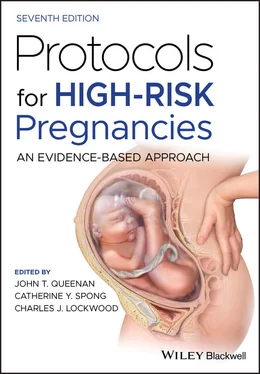1 ...7 8 9 11 12 13 ...38 1 American College of Obstetricians and Gynecologists' Committee on Health Care for Underserved Women. Committee Opinion No.654: Reproductive Life Planning to Reduce Unintended Pregnancy. Obstet Gynecol 2016; 127(2):e66–9.
2 Brown RA, Dakkak H, Seabrook JA. Is breast best? Examining the effects of alcohol and cannabis use during lactation. J Neonatal Perinatal Med 2018; 11(4):345–56.
3 Denny CH, Acero CS, Naimi TS, Kim SY. Consumption of alcohol beverages and binge drinking among pregnant women aged 18–44 years – United States, 2015–2017. MMWR 2019; 68(16):365–8.
4 DeVido J, Bogunovic O, Weiss RD. Alcohol use disorders in pregnancy. Harv Rev Psychiatry 2015; 23(2):112–21.
5 Subramoney S, Eastman E, Adnams C, Stein DJ, Donald KA. The early developmental outcomes of prenatal alcohol exposure: a review. Front Neurol 2018; 9:1108.
6 Wright TE, Terplan M, Ondersma SJ, Boyce C, Yonkers K, Chang G, Creanga AA. The role of screening, brief intervention, and referral to treatment in the perinatal period. Am J Obstet Gynecol 2016; 215(5):539–47.
PROTOCOL 2 Smoking, Vaping, and Nicotine Exposure
John Byrne1 and George Saade2
1Department of Obstetrics and Gynecology, University of Texas Southwestern Medical Center, Dallas, TX, USA
2Department of Obstetrics and Gynecology, Division of Maternal Fetal Medicine, University of Texas Medical Branch, Galveston, TX, USA
Although cigarette smoking rates have continued to decline since the turn of the century, approximately 8% of women will smoke cigarettes sometime during their pregnancy in the US.
Tobacco exposure in pregnancy is associated with an increased rate of adverse outcomes such as fetal growth restriction, preterm birth, placenta previa, abruptio placentae, congenital anomalies such as cleft lip/palate, and perinatal mortality. It is estimated that up to 8% of preterm births, 19% of term deliveries of low‐birthweight infants, and 7% of preterm‐related infant deaths can be attributed to smoking during the pregnancy. The effects are not limited to cigarette smoking, as researchers have identified infants born to mothers who use smokeless tobacco, have similar levels of nicotine exposure, low birthweight, and preterm birth as the infants whose mothers smoked during pregnancy. Lastly, there has been a recent emergence of the use of electronic nicotine delivery systems or e‐cigarettes (also known as vaping), shifting many cigarette smokers to the use of e‐cigarettes. This electronic delivery system aerosolizes nicotine, releasing a vapor similar to traditional cigarette smoke, and 7% of women “vape” around the time of pregnancy, with 1.4% using during the pregnancy. Though the aerosol may contain fewer chemicals than cigarette smoke, it does contain other substances such as lead, benzene, and diacetyl.
There are several mechanisms which have been identified and proposed to explain adverse obstetrical and fetal outcomes associated with maternal nicotine exposure through cigarette smoking, e‐cigarette use or other smokeless routes. Nicotine crosses the placenta and can be detected in the fetal circulation at levels that exceed maternal concentrations by 15%, while amniotic fluid concentrations of nicotine are 88% higher than maternal plasma. Nicotine has been identified to impair uterine vascular function during pregnancy, by increasing vascular resistance and decreasing uterine artery blood flow. Carbon monoxide is also released during smoking and can be detected in the fetal circulation at levels that are 15% higher than maternal levels. It has a higher affinity for hemoglobin than oxygen to form the compound carboxyhemoglobin that shifts the oxygen dissociation curve to the left. Consequently, the availability of oxygen to fetal tissues is decreased. Beyond nicotine and carbon monoxide, tobacco smoke contains thousands of compounds that may have adverse effects on the developing fetus. For example, levels of cyanide in the circulation are higher in smokers, a substance that is toxic to rapidly dividing cells. In addition, nicotine can affect long‐term function through epigenetic changes
Nicotine replacement therapies such as gum, lozenges, patches or inhalers provide a sustained, yet lower level of nicotine compared to cigarettes. Similar effects of stillbirth, preterm birth, and low birthweight have been documented with use of these therapies, which can be attributed to impaired uterine vascular function due to the nicotine exposure. Vaping or e‐cigarette aerosol may also expose the user to volatile organic compounds and heavy metals, in addition to the nicotine or other substances commonly delivered. More research is needed regarding the effects of e‐cigarette on the developing fetus.
Screening for tobacco, nicotine, and vaping exposure
Identifying pregnant women who use tobacco, specifically cigarettes, e‐cigarettes and smokeless tobacco, is critical to the cessation and reduction of morbidity. Ideally, this would be identified prior to the pregnancy, when the risks associated with smoking in pregnancy could be discussed and the benefits of smoking cessation emphasized. Screening at prenatal visits using biochemical markers of tobacco exposure may have some utility in identification and cessation of tobacco use. Cotinine, a metabolite of nicotine, is an accurate assay for nicotine exposure when measured in urine and can be part of a cost‐effective cessation program. Studies indicate higher success rates when participants are aware that compliance is measured with biochemical tests. However, this has not been accepted into routine clinical practice at this time.
Smoking cessation interventions for pregnant women result in fewer low‐birthweight newborns and perinatal deaths, fewer physical, behavioral and cognitive problems during infancy and childhood, and important health benefits for the mothers. Women who discontinue smoking even as late as 30 weeks of gestation have infants with higher birthweight than those who continue smoking. In contrast, “cutting down” seems to improve fetal growth only slightly.
Smoking cessation interventions, whether it be for cigarette or e‐cigarette smoking, should be included as part of prenatal care. Women are more likely to quit smoking during pregnancy than at any other time in their lives. An office‐based cessation counseling session of 5–15 minutes, when delivered by a trained provider with the provision of pregnancy‐specific educational materials, increases rates of cessation among pregnant smokers. Trials have shown that a five‐step intervention program (the 5 As) is effective.
1 Ask pregnant women about smoking status using a multiple‐choice question method to improve disclosure.
2 Advise women who smoke to quit smoking, with unequivocal, personalized and positive messages about the benefits for her, the baby, and family.
3 Assess the woman’s willingness to try to quit smoking within the next 30 days. If the woman wants to quit, the provider should move to the next step, Assist. For women who are unwilling to attempt cessation, the advice, assessment and assistance should be offered at each future visit.
4 Assist women who are interested in quitting by encouraging use of problem‐solving methods and skills for cessation and addressing issues that the woman believes might adversely influence her attempt to quit. Provide self‐help smoking cessation materials that contain messages to build motivation and confidence in support of a cessation attempt. Avoid “trigger situations.” Arrange social support in the smoker’s environment by helping her identify and solicit help from family, friends, co‐workers, and others who are most likely to be supportive of her quitting smoking. Provide social support as part of the treatment.
Читать дальше












